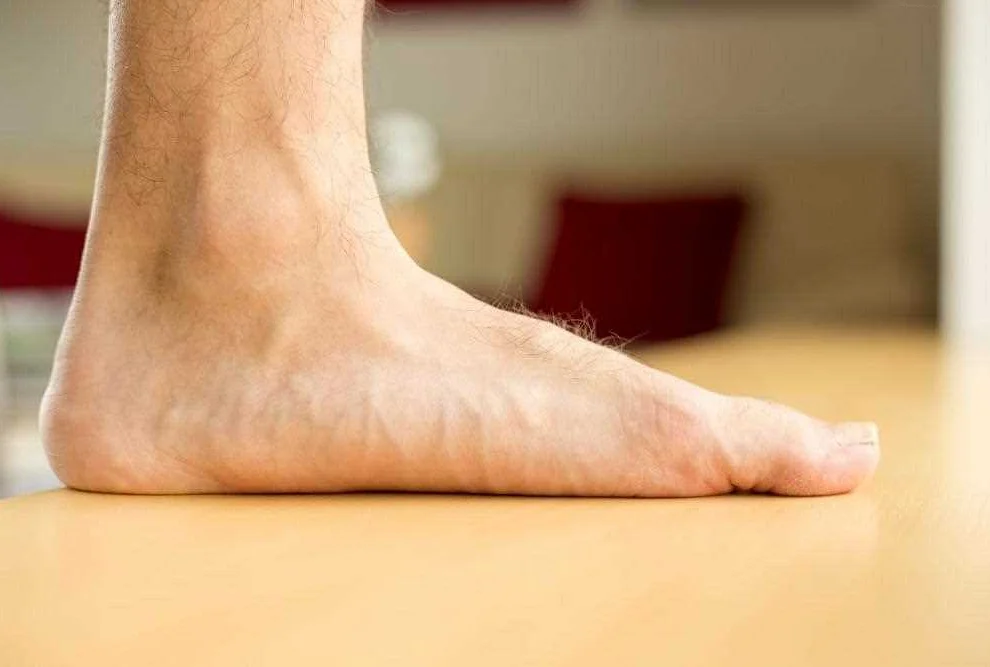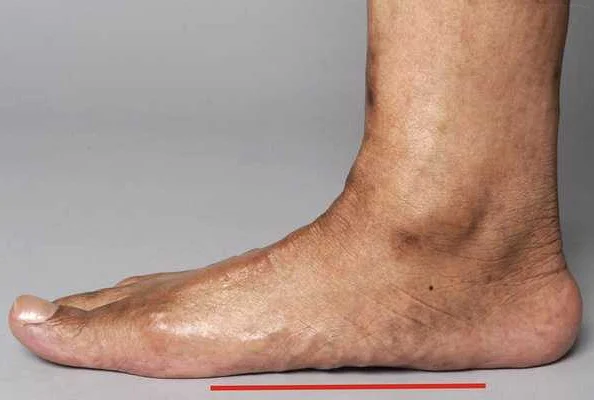Methods for Treating Flat Feet
Содержимое
Learn about the basic treatment methods for flat feet, including exercises, orthotic devices, and lifestyle changes. Find out how these methods can help improve symptoms and prevent complications.
Flat feet, also known as fallen arches, is a condition where the arches on the inside of the feet are flattened or completely absent. This can cause various problems such as pain, discomfort, and difficulty in walking or standing for long periods of time. Fortunately, there are several techniques that can help in treating flat feet and improving the overall functionality of the feet.
Arch exercises are a key component in treating flat feet. These exercises help to strengthen the muscles and ligaments that support the arches. One effective exercise involves standing barefoot on a towel and scrunching it up with the toes. Another exercise is to place a small ball under the arch of the foot and roll it back and forth. These exercises should be done regularly to gradually improve the arches.
Orthotic devices can also be used to treat flat feet. These devices are specially designed to provide support to the arches and help align the feet properly. They can be custom-made or purchased over-the-counter. Orthotic inserts can be worn in shoes and provide additional cushioning and support. It is important to choose the right type of orthotic device that suits your needs and follow the instructions for proper usage.
Stretching exercises can also help in treating flat feet. Stretching the calf muscles, Achilles tendon, and plantar fascia can help improve the flexibility and strength of the feet. One common exercise involves standing facing a wall, placing the hands on the wall, and leaning forward while keeping the heels on the ground. This stretches the calf muscles and Achilles tendon. Stretching exercises should be done regularly to maintain flexibility and prevent tightness.
Physical therapy can play a crucial role in treating flat feet. A physical therapist can guide you through specific exercises and techniques to strengthen the muscles and improve the alignment of the feet. They can also provide manual therapy such as massage and stretching to alleviate pain and discomfort. Physical therapy sessions should be done under the guidance of a qualified therapist to ensure proper treatment and progress.
In conclusion, flat feet can be effectively treated with a combination of exercises, orthotic devices, stretching, and physical therapy. It is important to consult with a healthcare professional to determine the best approach for your specific condition. With proper treatment and care, flat feet can be managed and the functionality of the feet can be significantly improved.
Understanding Flat Feet and Treatment Options

Flat feet, also known as fallen arches, is a common condition where the arch of the foot is flattened, causing the entire sole of the foot to make contact with the ground. This can result in foot pain, fatigue, and a variety of other problems. Flat feet can be caused by a variety of factors, including genetics, injury, and certain medical conditions.
Fortunately, there are treatment options available for individuals with flat feet. The most common treatment is the use of orthotic devices, such as arch supports or shoe inserts, that provide additional support to the arch of the foot. These devices can help alleviate pain and discomfort associated with flat feet.
In addition to orthotic devices, physical therapy exercises can also be beneficial for individuals with flat feet. These exercises can help strengthen the muscles that support the arch of the foot and improve overall foot function.
Another treatment option for flat feet is footwear modification. Wearing shoes with proper arch support and cushioning can help reduce discomfort and provide additional support to the foot. It is also important to choose shoes that fit well and provide enough room for the foot to move comfortably.
In more severe cases of flat feet, surgical intervention may be necessary. Surgery can help correct the alignment of the foot, improve foot function, and alleviate pain. However, surgery is typically considered a last resort and is only recommended when conservative treatments have failed to provide relief.
If you suspect that you have flat feet or are experiencing foot pain, it is important to consult with a healthcare professional. They can provide an accurate diagnosis and recommend the most appropriate treatment options for your individual needs.
What are Flat Feet and Why Do They Occur?
Flat feet, also known as fallen arches, is a condition where the arches of the feet are flattened and the entire soles of the feet touch the ground when standing. This condition can be present from birth or can develop over time due to various reasons.
One of the main causes of flat feet is the failure of the arches to develop properly during childhood. This can be due to genetic factors or certain medical conditions. Additionally, injuries to the feet or ankles, such as fractures or ligament damage, can also lead to flat feet. Obesity, pregnancy, and aging can also contribute to the development of flat feet.
Flat feet can cause various issues and discomfort, including foot and ankle pain, leg fatigue, and difficulty with physical activities. The lack of arch support can also affect the alignment of the legs, hips, and lower back, causing additional problems in the body.
It is important to understand the causes of flat feet in order to effectively treat and manage the condition. By identifying the underlying factors contributing to flat feet, healthcare professionals can develop a personalized treatment plan that may include exercises, orthotic devices, and lifestyle modifications to alleviate symptoms and improve the functioning of the feet.
Common Symptoms and Challenges of Flat Feet
Flat feet, also known as fallen arches, can cause a variety of symptoms and challenges for individuals. Some of the most common symptoms include:
Pain: People with flat feet often experience pain or discomfort in the arch area of the foot, especially after standing or walking for long periods of time.
Foot and leg fatigue: Due to the lack of arch support, individuals with flat feet may find that their feet and legs feel tired or achy after activities that involve prolonged standing or walking.
Pronation: Flat feet can lead to overpronation, which is an excessive inward rolling of the foot. This can cause issues such as ankle instability and increased risk of ankle sprains.
Foot deformities: In some cases, flat feet can contribute to the development of foot deformities, such as bunions or hammertoes.
Calf and knee pain: Flat feet can sometimes lead to pain in the calves and knees due to the altered mechanics of the foot and leg.
Difficulty finding suitable footwear: People with flat feet may struggle to find shoes that provide adequate arch support and stability, as many shoes are designed with a typical arch shape in mind.
Overall, flat feet can present various challenges and discomfort for individuals. It is important to seek appropriate treatment to alleviate symptoms and improve foot function.
Orthotic Devices for Flat Feet: Finding the Right Fit

If you have flat feet, finding the right orthotic device can make a world of difference in your comfort and overall foot health. Orthotic devices are specially designed inserts that you place in your shoes to provide additional support and stability for your feet. They can help to alleviate the pain and discomfort often associated with flat feet by correcting your foot alignment and redistributing pressure.
When choosing an orthotic device for flat feet, it’s important to find one that fits properly and addresses your specific needs. Here are some tips to help you find the right fit:
1. Consult with a Healthcare Professional:
Before purchasing an orthotic device, it’s recommended to consult with a healthcare professional who specializes in foot conditions, such as a podiatrist or orthopedic specialist. They can assess your feet, evaluate your gait, and recommend the most appropriate type of orthotic device for your specific needs.
2. Consider the Arch Type:
Flat feet are characterized by a low or absent arch. When choosing an orthotic device, consider the level of arch support it provides. Look for orthotics that have a deep heel cup and strong arch support to help align your feet and improve your overall foot function.
3. Custom-Made vs. Over-the-Counter Orthotics:
There are two main types of orthotic devices: custom-made and over-the-counter. Custom-made orthotics are individually crafted based on your foot measurements and specific needs. They provide a higher level of customization and are recommended for severe or complex flat feet cases. Over-the-counter orthotics, on the other hand, are pre-made and designed to fit a wider range of foot types and conditions. They are a more affordable option and may be suitable for mild to moderate flat feet.
4. Comfort and Fit:
When trying on orthotic devices, pay attention to how they feel in your shoes. They should fit snugly and provide support without causing any discomfort or pain. Orthotics that are too tight or too loose may not provide the proper level of support and could potentially cause additional foot problems.
5. Give it Time:
It’s important to note that it may take some time for your feet to adjust to wearing orthotic devices. Start by wearing them for short periods of time and gradually increase the duration as your feet become accustomed to the added support. If you experience any persistent pain or discomfort, consult with your healthcare professional.
Finding the right orthotic device for your flat feet can greatly improve your foot health and overall quality of life. By following these tips and working closely with a healthcare professional, you can find the perfect fit that provides the support and relief you need.